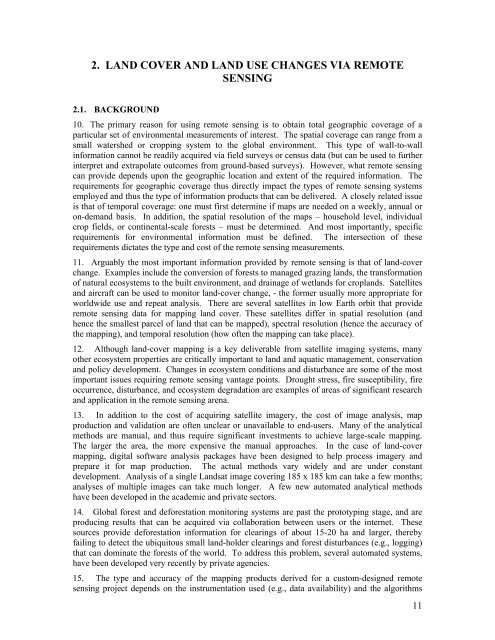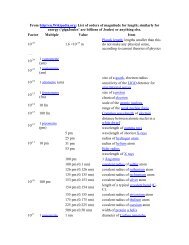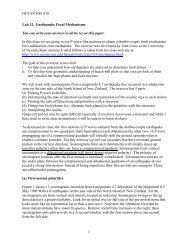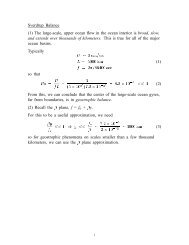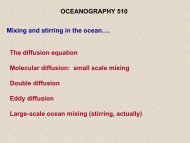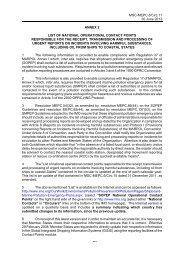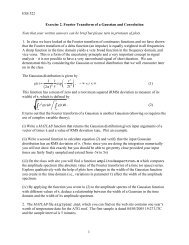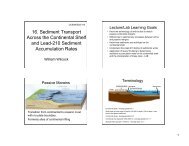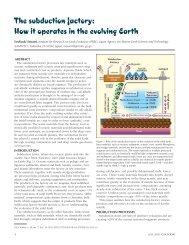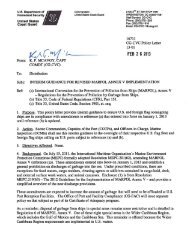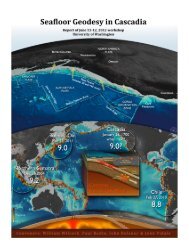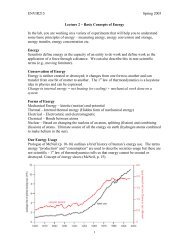LOWER ZAMBEZI RIVER BASIN BASELINE DATA ON LANDUSE ...
LOWER ZAMBEZI RIVER BASIN BASELINE DATA ON LANDUSE ...
LOWER ZAMBEZI RIVER BASIN BASELINE DATA ON LANDUSE ...
You also want an ePaper? Increase the reach of your titles
YUMPU automatically turns print PDFs into web optimized ePapers that Google loves.
2. LAND COVER AND LAND USE CHANGES VIA REMOTESENSING2.1. BACKGROUND10. The primary reason for using remote sensing is to obtain total geographic coverage of aparticular set of environmental measurements of interest. The spatial coverage can range from asmall watershed or cropping system to the global environment. This type of wall-to-wallinformation cannot be readily acquired via field surveys or census data (but can be used to furtherinterpret and extrapolate outcomes from ground-based surveys). However, what remote sensingcan provide depends upon the geographic location and extent of the required information. Therequirements for geographic coverage thus directly impact the types of remote sensing systemsemployed and thus the type of information products that can be delivered. A closely related issueis that of temporal coverage: one must first determine if maps are needed on a weekly, annual oron-demand basis. In addition, the spatial resolution of the maps – household level, individualcrop fields, or continental-scale forests – must be determined. And most importantly, specificrequirements for environmental information must be defined. The intersection of theserequirements dictates the type and cost of the remote sensing measurements.11. Arguably the most important information provided by remote sensing is that of land-coverchange. Examples include the conversion of forests to managed grazing lands, the transformationof natural ecosystems to the built environment, and drainage of wetlands for croplands. Satellitesand aircraft can be used to monitor land-cover change, - the former usually more appropriate forworldwide use and repeat analysis. There are several satellites in low Earth orbit that provideremote sensing data for mapping land cover. These satellites differ in spatial resolution (andhence the smallest parcel of land that can be mapped), spectral resolution (hence the accuracy ofthe mapping), and temporal resolution (how often the mapping can take place).12. Although land-cover mapping is a key deliverable from satellite imaging systems, manyother ecosystem properties are critically important to land and aquatic management, conservationand policy development. Changes in ecosystem conditions and disturbance are some of the mostimportant issues requiring remote sensing vantage points. Drought stress, fire susceptibility, fireoccurrence, disturbance, and ecosystem degradation are examples of areas of significant researchand application in the remote sensing arena.13. In addition to the cost of acquiring satellite imagery, the cost of image analysis, mapproduction and validation are often unclear or unavailable to end-users. Many of the analyticalmethods are manual, and thus require significant investments to achieve large-scale mapping.The larger the area, the more expensive the manual approaches. In the case of land-covermapping, digital software analysis packages have been designed to help process imagery andprepare it for map production. The actual methods vary widely and are under constantdevelopment. Analysis of a single Landsat image covering 185 x 185 km can take a few months;analyses of multiple images can take much longer. A few new automated analytical methodshave been developed in the academic and private sectors.14. Global forest and deforestation monitoring systems are past the prototyping stage, and areproducing results that can be acquired via collaboration between users or the internet. Thesesources provide deforestation information for clearings of about 15-20 ha and larger, therebyfailing to detect the ubiquitous small land-holder clearings and forest disturbances (e.g., logging)that can dominate the forests of the world. To address this problem, several automated systems,have been developed very recently by private agencies.15. The type and accuracy of the mapping products derived for a custom-designed remotesensing project depends on the instrumentation used (e.g., data availability) and the algorithms11


